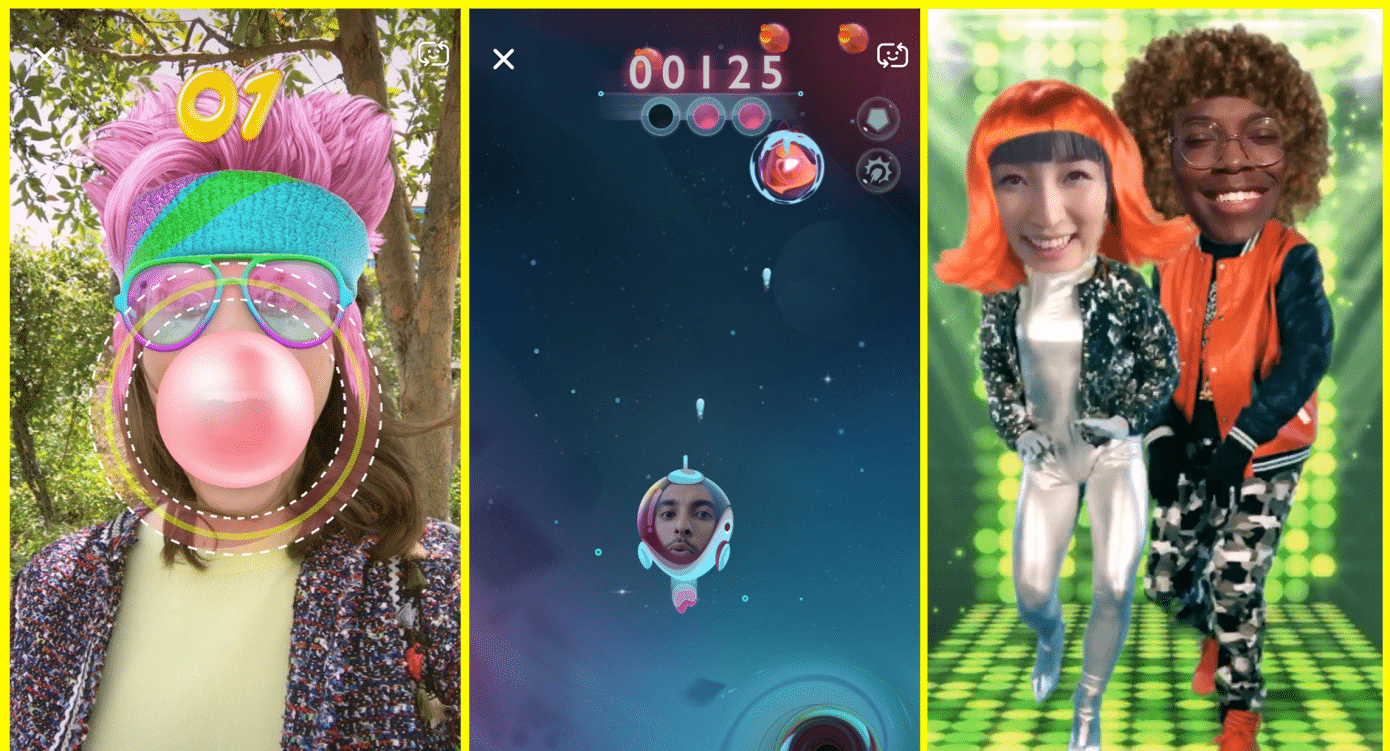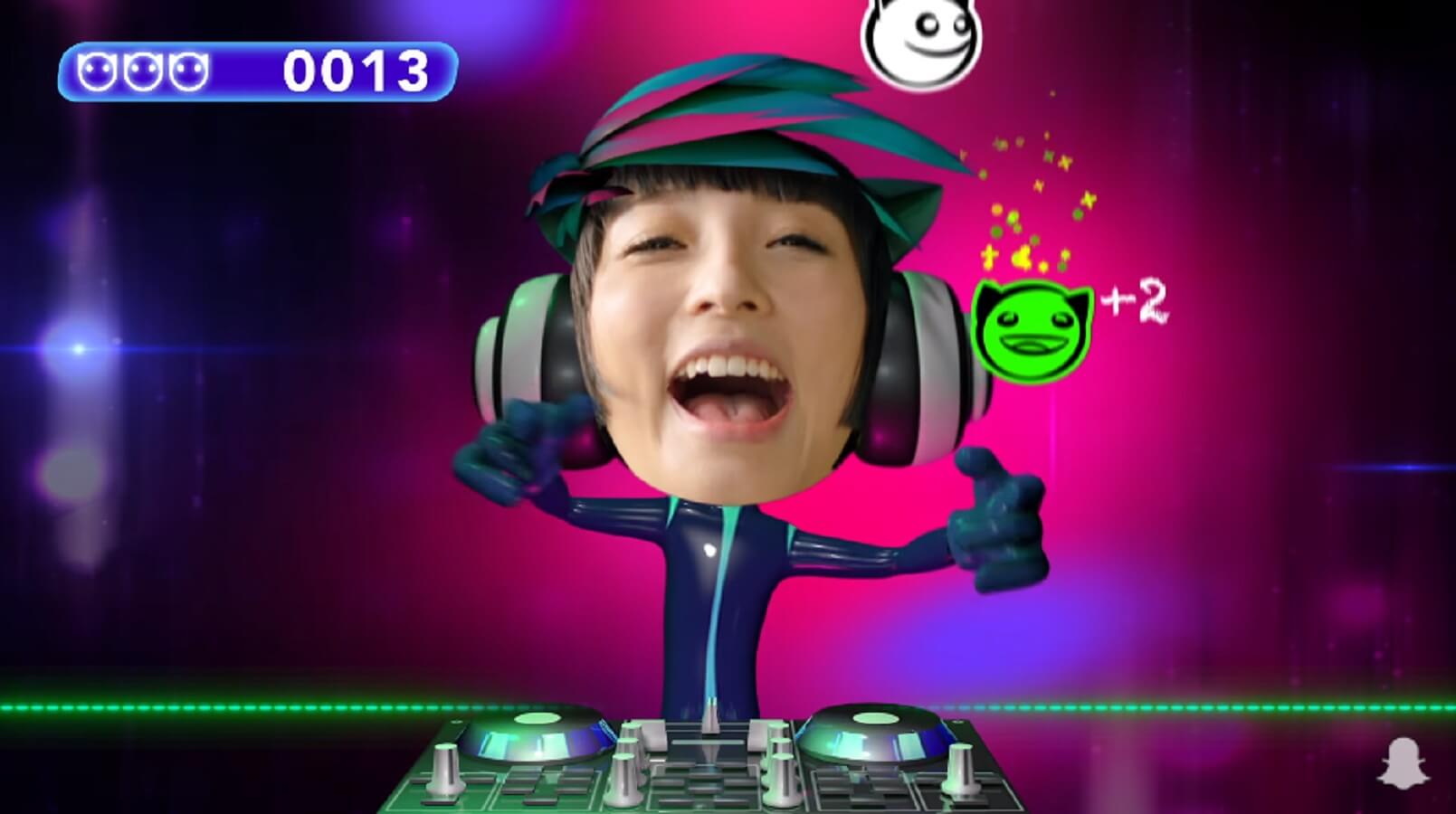
Snapchat just took a step forward in its AR standing. Its new Snappables let users play selfie-based AR games, either solo or with a friend. This brings Snapchat into multi-player, synchronous AR, which is a step towards “True AR.”
As background, though Snapchat has put AR on the mainstream map, it often gets flak from AR purists for not being “true AR.” This is technically correct, due it its lack of SLAM and scene awareness. But it probably doesn’t matter: Snapchat has done AR a favor as a its gateway drug.
But it’s also not “true AR” for another reason seldom discussed: It doesn’t augment “reality” in real time. It rather augments photos and video as they’re being recorded, which are then shared asynchronously. Technically, that makes it less augmented reality, and more augmented media.

Snappables changes that by shifting the moment of augmentation to real time. For example, two users can play a game together while seeing their augmented faces live in the gameplay. This is trivial in one sense, but could be an important move for Snapchat’s AR strategy in another sense.
As we’ve examined, multi-player AR will fuel AR’s killer apps as it accelerates both their appeal and network effect. The real magic will be multi-player image persistence in real-world scenes, as opposed to live faces that are infused into casual games. But this is still a positive step.
For Snapchat, this also boosts its overall appeal as it competes with the likes of Instagram for active usage. It will continue to position AR as a differentiator in that battle, but there could be increased competition from Facebook/Instagram given their Camera Effects platform.

Snapchat is pre-empting that competition by being more developer friendly, just as Camera Effects is. After initially shunning an open platform approach, its slowing user growth forced Snapchat to think differently. Now, its Lens Studio platform has opened the door to developers.
That means Face Lenses, World Lenses, AR Geofilters and now Snappables will benefit from third-party creativity and developer muscle. The downside, and reason it held out for so long, is the loss of quality control. But the tradeoff of capability for scale is a theme we keep seeing.
Though it will continue to represent AR’s simplest form, Snapchat is more penetrated than most AR — whether “true AR” or not — to date. With multi-player and synchronous capability, it could now get more mainstream users hooked on the gateway drug… which is good for everyone in AR.
https://youtu.be/NkvnmMc_hSg
For a deeper dive on AR & VR insights, subscribe to ARtillry Intelligence Briefings, and sign up for the free ARtillry Weekly newsletter.
Disclosure: ARtillry has no financial stake in the companies mentioned in this post, nor received payment for its production. Disclosure and ethics policy can be seen here.
